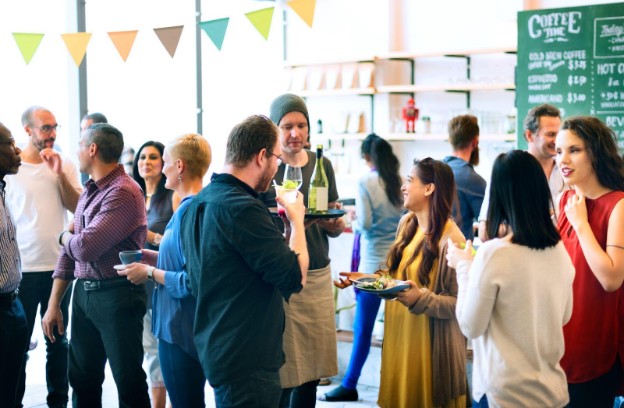The New Rules of Branded Merch for Local Events

The New Rules of Branded Merch for Local Events
Local events are moving away from generic swag toward practical, reusable items
Community-focused designs are more effective than mass-produced branding
Smaller, higher-quality merch runs deliver better engagement
Australian suppliers offer flexibility and context for local audiences
If you’ve helped plan a local event recently, you’ve likely felt it the old approach to merch just doesn’t land the way it used to. People are skipping the lanyards and fridge magnets, and even free tees no longer generate the same buzz. Whether it’s a council-run festival, a school fundraiser, or a community sports day, the standard giveaway bag is being rethought.
That’s because expectations have changed. People don’t just want free stuff they want something they’ll use. Something that makes sense for the event, the season, and the crowd. If you're still ordering bulk pens with logos slapped on them, you’re missing what gets noticed now.
The shift from throwaway to practical
Organisers have started paying closer attention to what people take home and keep. It’s not about cutting costs it’s about cutting waste. A few years ago, the goal might have been to hand out as much as possible to as many people as possible. These days, the question is more direct: will anyone hang onto this?
At small-town expos, it’s the items with a function that people remember. Cold-weather events favour scarves or hand warmers printed with a discreet logo. Beachside festivals lean toward reusable drinkware or canvas totes. Clubs are shifting their focus from volume to relevance. Instead of flooding stalls with branded plastic, they’re choosing a handful of well-made pieces that serve a purpose.
That shift is as much about audience expectations as it is about budgets. People are quicker to dismiss anything that feels wasteful. But they’ll use something practical without thinking twice and that repeat use is where good merch quietly earns its value.
What custom merch actually works in 2025
One clear trend this year is how local groups are tailoring merch to suit the setting. You’re more likely to see custom items tied to the event’s culture, not just generic branding. A regional footy fundraiser might have a limited set of drink coolers printed with player nicknames. A local brewery might team up with a street artist to create reusable cups unique to one weekend only.
That shift isn’t about style over substance. It’s about offering things that are recognisable, useful, and appreciated. School P&C committees are ordering fewer novelty items and more things that parents want to keep. Many now buy personalised stubby holders not just because they look good, but because they last. They get chucked into picnic bags and fishing kits. They show up again at the next club BBQ.
This isn’t about chasing trends. It’s a more thoughtful way of ensuring that the things you give out don’t end up in a landfill. In the process, they build more loyalty than something flashy that’s used once and forgotten.
Why local matters more than ever
There’s a difference between generic branding and something that feels like it belongs to a place. That difference matters, especially at community events. When the merch connects to a shared identity whether it’s a postcode, a mascot, or a running joke only locals get people respond to it. They’re more likely to use it, and they’re more likely to talk about where it came from.
A food and wine weekend in Margaret River has a very different vibe from a street festival in suburban Brisbane, and the merchandise should reflect that. People notice when a stubby holder features a design from a local tattoo artist instead of a generic print. They remember when tote bags had a quote from a local footy legend, not just the council logo. These details aren’t just cute extras they’re the reason people hold onto the item.
It’s not about making everything hyper-customised. It’s about paying attention to what the community values and reflecting that in small, tangible ways. The more familiar the design feels, the more likely it is to stay in use and that’s where local merch earns its quiet win.
Cost isn’t king, utility is
For a long time, the go-to strategy was to get the cheapest option in the largest quantity. But a box of 1,000 stress balls no one wants doesn’t get you far. More and more organisers are shifting their budgets toward items people use, even if that means ordering fewer of them.
It’s a practical move. You can spend a bit more per unit and still stay on budget, because you’re not padding your order with filler. Instead of a pile of branded junk that vanishes by the end of the day, you’re giving out fewer items that people remember and reuse.
Reusable water bottles, stubby holders, tea towels, mini cooler bags they tick the boxes for function and visibility without feeling wasteful. They’re also easier to explain when you’re asking for sponsorships or grant funding. Councils and clubs are more comfortable supporting merch when it serves a real purpose and avoids single-use plastic.
It’s also a shift that aligns with how people think about sustainability today. Practicality and environmental awareness are no longer separate considerations they’re the same decision. If an item won’t get reused, there’s less reason to produce it in the first place.
What to look for when sourcing merch in Australia
One of the biggest mistakes event organisers make is leaving merch to the last minute, then rushing to order from overseas because local options seem too slow or too expensive. However, with a bit of planning, working with Australian suppliers can save you time and help avoid the quality issues that often accompany offshore bulk orders.
Most smaller-scale suppliers offer flexible runs and better communication, especially if you’re dealing with artwork tweaks or tight delivery windows. You’ll also get better outcomes if you understand the limitations early on. For example, the minimum orders for screen printing may differ from those for digital prints. Certain items might only be available seasonally. Local print shops or merchandise suppliers will tell you this upfront and often help steer you to better options within your budget.
If you’re working on a small event say, a club presentation night or regional market stall partnering with a local provider also gives you room to experiment. You can trial a short run, get feedback, and refine the design without wasting money. And because they understand local context, they’ll often suggest formats or finishes that land better with your crowd than something off a generic catalogue.
Final Thoughts
Merch is no longer about slapping a logo on the cheapest thing you can find. If you want it to work to be used, noticed, and remembered it needs to suit the crowd and the context. Whether you’re planning a town fundraiser, a local festival, or a small business promo, the pieces people hang onto are the ones that feel familiar, practical, and a bit personal. That shift is already happening everywhere, and the results speak for themselves.





